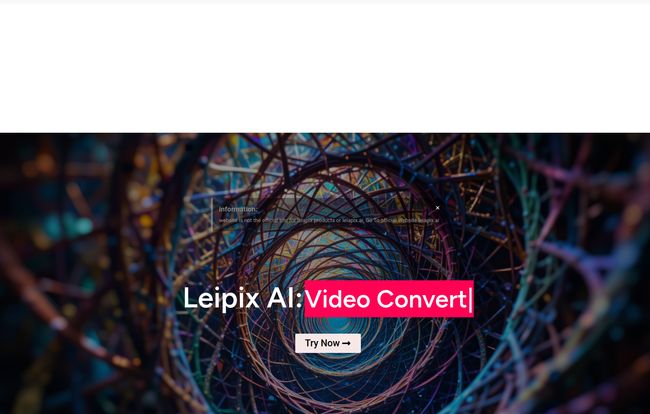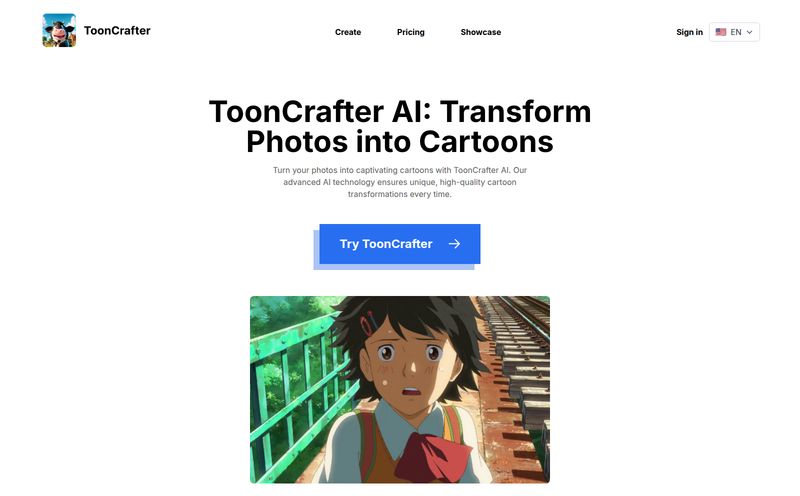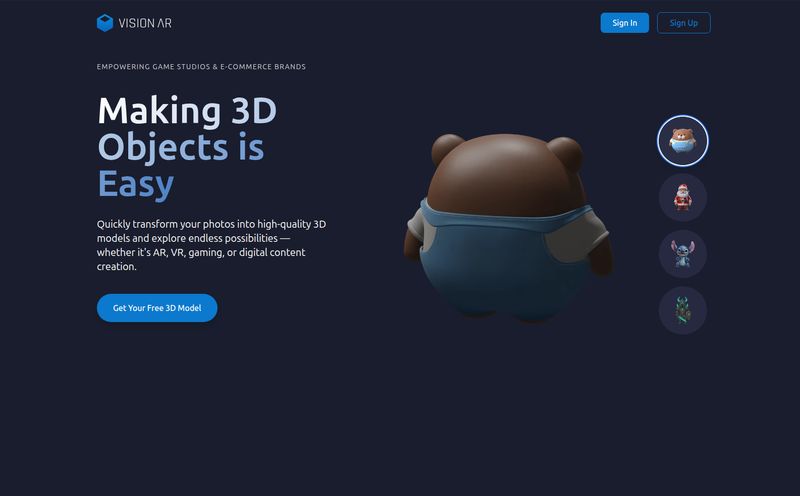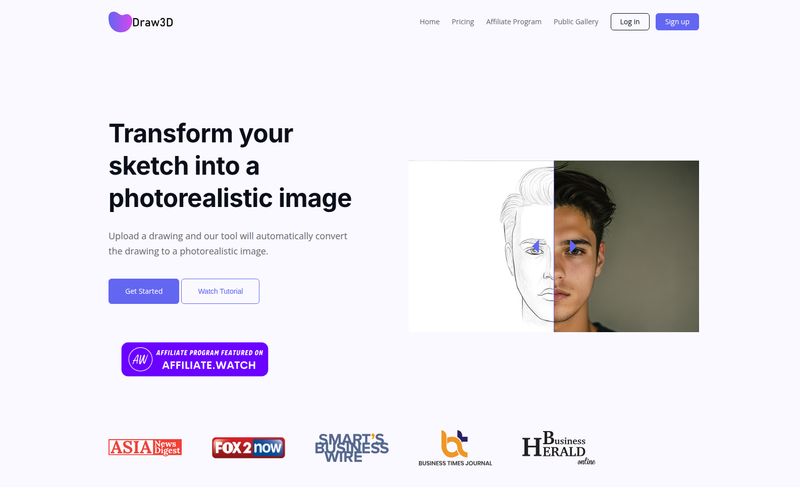Your social media feed, my social media feed… they can get a little… flat. We spend ages getting the perfect shot, the right angle, the perfect lighting, only to have it sit there, motionless, on a screen. I've been in the SEO and traffic game for years, and I know that stopping the scroll is half the battle. We're all hunting for that little bit of magic that makes someone pause.
I’ve seen all the tricks: fancy video transitions, trendy audio, you name it. But what if you could make your still photos come to life? Not like a cheesy GIF, but with genuine, mesmerizing depth. For a while, that meant owning a fancy 3D camera or spending hours in complex software. Not anymore. I recently stumbled upon a tool that’s been making some waves in the creative AI space, and I had to check it out. It's called the LeiaPix Converter, and honestly, it’s pretty darn cool.
So, What on Earth is LeiaPix Converter?
In short, LeiaPix Converter is a free web-based tool from a company called Leia Inc. that takes your boring, old 2D images (you know, the ones on your phone right now) and converts them into 3D Lightfield images. Whoa, big words. What does that mean in English? It means it adds depth. Real, perceivable depth.
It’s not just stretching the image or applying a simple parallax filter. It’s like giving your photo a tiny digital brain. A surprisingly clever AI scans your picture, figures out what’s in the foreground (like a person) and what’s in the background (like the mountains behind them), and then builds something called a “depth map.” This map tells the image how to move to create a realistic 3D effect. The result? A photo that sways and shifts as if you're looking through a window. It's kind of wild.
Getting My Hands Dirty: A First Go with LeiaPix
Okay, theory is great, but I'm a hands-on kind of guy. I decided to put LeiaPix to the test with a simple photo I took on a recent hike—nothing special, just me against a backdrop of trees. The interface is clean. Almost suspiciously clean. You just drag and drop your image, and… that’s it.
Within seconds, the magic happens. The AI does its thing, and suddenly, my static photo was alive. The trees in the background seemed to recede, while my goofy grin stayed firmly in the foreground. It’s an immediate “wow” moment.

Visit LeiaPix AI
From there, a whole panel of simple sliders appears. You can tweak everything. Want a more dramatic effect? Crank up the “Animation Amplitude.” Want the motion to be a slow, circular pan? Just select it from a dropdown. It's incredibly intuitive. You don’t need a manual or a degree in 3D modeling. You just play. And for someone who values tools that don't come with a steep learning curve, this was a massive win.
The Magic Behind the Curtain: Digging into the Features
Once you get past the initial fun, you start to see the real power of the tool. It's more than a one-trick pony.
The Core 2D to 3D Conversion
This is its bread and butter. The AI that generates the depth map is the star of the show. I found that it works best with images that have a clear subject and a distinct background. Think portraits, pet photos, or landscape shots with a strong focal point. It gives the AI clear data to work with, resulting in a cleaner, more believable effect.
Let's Get Moving: Creating Animations
This is where the fun really begins. The standard animation is a subtle horizontal “breathing” motion, but you can control so much more. There are options for circular, tall circle, and vertical animations. You can also adjust the focus point, effectively telling the viewer where to look. By playing with these settings, you can create anything from a gentle, dreamy sway to a more dynamic, attention-grabbing loop for an ad or social post.
Exporting Your Masterpiece for the World
Creating something cool is pointless if you can't share it. LeiaPix knows this. You can export your creation in several useful formats. For social media, you can grab an MP4 video file or a classic GIF. For more technical applications, it even supports formats like Side-By-Side 3D and, of course, its own Leia Image Format. This flexibility means it's useful for both a quick Instagram story and for more serious projects.
The Good, The Bad, and The Pixelated
No tool is perfect, right? After playing with it for a while, here’s my honest breakdown.
On the plus side, the accessibility is off the charts. It's free to start, it's web-based so there's nothing to install, and you can use any old JPEG or PNG from your camera roll. This is democratization of creative tech, and I’m all for it. It lowers the barrier to entry for creating really engaging content. You dont need a fancy camera or expensive software, just a web browser.
Now, for the not-so-great. The effectiveness really does depend on the source image. I tried it on a busy photo of a crowded market, and the AI got a little… confused. The depth effect was muddy, with weird artifacts where the algorithm couldn't distinguish the foreground from the mid-ground. It works best with high-quality, well-lit images with clear separation. Also, while the basic features are free, the more advanced editing tools and higher-resolution exports are tucked away behind a premium subscription. That's fair, but it's something to be aware of.
So, Who Is This Actually For?
I can see a few groups getting a ton of mileage out of LeiaPix:
- Social Media Managers and Content Creators: This is a no-brainer. It's a simple way to create eye-catching visuals that break the monotony of a standard feed. Think of a 3D product shot or an animated version of a new profile picture.
- Photographers: While it won't replace professional 3D rendering, it’s a fantastic tool for adding a little extra flair to a portfolio or giving clients a novel way to view their photos.
- Small Business Owners: Want to make your product on your Shopify store pop? A subtle 3D animation could be just the thing to increase engagement.
- Literally Anyone Who Takes Pictures: Seriously. It's just fun. Taking a picture of your dog and making it look like a 3D movie star is a perfectly valid use of your time, in my opinion.
Let's Talk Money: The LeiaPix Pricing Situation
This is often the big question. As of my review, LeiaPix operates on a freemium model. The pricing page itself seems to be a bit elusive (the link on their site was broken when I checked), which is pretty common for tools in beta or rapid development. However, the FAQ makes it clear: there's a free version with all the basic features we've talked about. This is more than enough to get started and create some amazing stuff.
For those who need more—like advanced depth map editing, batch processing, or higher-res exports—there are premium subscription options. I couldn't nail down the exact price, but this model is standard practice. Let people fall in love with the tool for free, then offer power features for a price. It works.
Frequently Asked Questions about LeiaPix
Do I need special glasses to see the 3D effect?
Nope! The effect is a motion-based illusion of depth, often called the wobble effect or parallax effect. It's designed to be viewed on any standard 2D screen, like your phone or computer monitor.
What kind of images work best with LeiaPix?
For the best results, use high-quality images with a clear separation between the subject in the foreground and the background. Portraits, landscapes with a focal point, and product shots tend to work beautifully. Busy, low-contrast, or poorly lit images can sometimes confuse the AI.
Is LeiaPix free to use?
Yes, there is a generous free version that lets you convert images and use basic animation features. For more advanced controls, higher resolution exports, and other pro-level tools, there are premium subscription plans available.
Can I use the images on my social media?
Absolutely. LeiaPix is designed for this! You can export your creations as MP4 videos or GIFs, which are perfect for posting on Instagram, Facebook, TikTok, Twitter, and more.
Is it difficult to learn?
Not at all. The basic interface is incredibly user-friendly. If you can drag and drop a file, you can create a 3D image in seconds. The advanced features might take a little experimenting, but there’s no steep learning curve.
My Final Verdict: Is LeiaPix Converter Worth Your Time?
Without a doubt, yes. In an online world saturated with AI tools that promise the world, LeiaPix delivers something simple, fun, and genuinely impressive. It’s not a flawless, professional-grade 3D modeling suite, and it never pretends to be. It’s a tool for creators.
It’s for anyone who wants to add a spark of life to their static images without investing in expensive gear or a semester's worth of tutorials. The fact that you can try it for free makes it a complete no-brainer. Go grab a favorite photo from your phone, drop it into the converter, and just see what happens. I have a feeling you’ll be pleasantly surprised.



